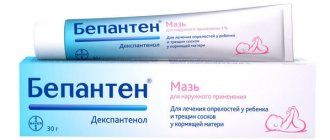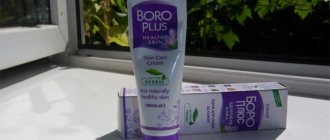The article was written by leading allergist-immunologist, pediatrician Euromed Kids Artem Andreevich Batin
Emollients (synonyms: emollient, emollient, from English emollient - softening, Latin emollire - soften, French molle - soft) is the general name for cosmetics that have an effective moisturizing and regenerating effect on the skin.
Emollients are not a cure! This is a medicinal cosmetic that helps maintain the skin: reduces skin itching, accelerates the healing of microcracks, maintains skin elasticity and moisture.
IMPORTANT! Information from the article cannot be used for self-diagnosis and self-medication! Only a doctor can prescribe the necessary examinations, establish a diagnosis and draw up a treatment plan during a consultation!
What are emollients
Emollients are creams containing a group of substances capable of quickly moisturizing and restoring the skin. They penetrate to the level of the stratum corneum and hydrolipidic mantle. Almost immediately after using emollients the skin's protective barrier is restored, it becomes soft and velvety, saturated with moisture, the feeling of discomfort disappears. These properties of emollients make them indispensable for skin care. for atopic dermatitis and other skin diseases. Emollients activate local immunity, promote rapid restoration of skin when damaged, eliminate peeling and itching.
Types of emollients for children
Pediatricians and dermatologists recommend using emollient-based products to care for very dry, atopy-prone skin of babies. They carefully care for children's skin and do not cause irritation or dryness.
Emollients are often present in various baby skin care products:
- Emollient creams are intended for application to the skin during the daytime. They are not as greasy as ointments, so they are absorbed faster;
- In ointments, emollients are fatty and thick. Because of this, they remain in the upper layers of the skin for a long time and retain their moisturizing effect for a long time. Ointments - emollients for dermatitis are used at night;
- lotions with emollients spread very easily over the surface of the body and are instantly absorbed, but they provide less lasting hydration than ointments and creams.
For bathing children prone to atopic dermatitis, dryness and flaking of the skin, special detergents with emollients are intended. After bathing in a bath with the addition of emollients, the child’s skin is soft, silky, without signs of peeling.
Price
Before ordering or buying a specific drug, it is worth studying price examples of at least several options. Emollient has to be used for a long time, so cost is important, because changing the product halfway through the treatment is not recommended. Specific prices are presented in the table:
| Name of the product | Price in online pharmacy catalogs, rubles |
| Tsinocap | 328 |
| Afloderm | 336 |
| La-Cri cleansing gel | 300 |
| Bioderma Atoderm | 700 |
| Locobase Ripea | 370 |
| Emolium cream | 480 |
| Topicrem | 737 |
| Mustela cream | 630 |
| Petrolatum | 17 |
| Almond oil | 40 |
| Oilatum | 200 |
| Skin Active | 200 |
| Hydrocortisone | 24 |
| Bepanten Plus | 414 |
What does emollient contain?
The question of what is included in products with emollients is one of the first questions that doctors hear when they recommend using these products to treat dermatitis and other problems with a child’s skin. Emollients, as a rule, do not contain synthetic dyes, fragrances, or other ingredients that can cause skin irritation. The formulation of such products does not imply the use of hormonal agents or any other medications.
Products containing emollients may also include:
- antioxidants of natural origin (vitamin E, others) - they block inflammation in the skin and prevent itching;
- hyaluronic acid - it retains moisture on the surface of the skin;
- vegetable oils (avocado, sunflower) - natural lipids restore the fatty film on the skin, protect it from moisture loss, and make it more elastic;
- amino acids - help retain moisture in the skin;
- panthenol - activates the process of cell restoration and healing of damaged areas of the epidermis;
- urea - is involved in the transport of water molecules into the deep layers of the skin.
Emollients used for atopic dermatitis and other skin problems in children may also contain other substances. For example, glycerin, pyrrolidine and carboxylic acid, which improve the penetration of water from the air into the upper layers of the skin. Oils, petroleum jelly and wax, which retain water in the skin. Depending on the concentration of these substances in a particular emollient product and its combination with other components, the thickness of the cream, lotion or gel may vary. Thus, lotions contain less lipids than ointments or creams. Emollients with a high fat content have a thick consistency and are stickier. They are recommended for use in atopic dermatitis to prevent dryness and cracking.
Classification
The choice of emollient preparations depends on the condition of the skin and the severity of its damage. There are products for children and adults. Emollients for bathing newborns can be classified into a separate group.
Cosmetics may contain harmful emollients, for example, coconut oil, lanolin, undiluted almond oil, isopropyl isostearate, isopropyl myristate and isostearic alcohol. It is better not to purchase such products.
List of useful oily substances:
- paraffin;
- ceresin;
- petrolatum;
- mineral, jojoba, castor oil;
- sodium lauryl sulfate;
- beeswax;
- dimethicone;
- lanolin.
Depending on the main active component, these products come in three types:
- Natural. Manufactured using natural ingredients. These are oils, as well as extracts of plant and animal origin, for example, jojoba oil, lanolin. This group is the safest, so they are best used for children.
- Chemical. These are components obtained from the refining of petroleum products. These include paraffin, petroleum jelly, sodium lauryl phosphate.
- Synthetic. These are artificially created components (dimethicone). They are well absorbed, do not cause allergies, do not leave an oily sheen on the skin, so they are suitable for the face. The disadvantage of gels is that they heavily clog pores, so they are not suitable for problematic skin.
The benefits of emollients for children's skin
Children's skin needs careful and proper care. It is especially important to choose suitable bathing products and creams to moisturize the skin of a child prone to atopic dermatitis or other skin problems. You should choose emollients for your child on the recommendation of a doctor (pediatrician, dermatologist or allergist). Mustela specialists have developed a whole line of products for very dry, atopic skin of children. The “STELATOPIA” product line includes the following products:
- Cream - emollient
- Balm - emollient
- Bathing Cleansing Oil
- Cleansing bathing gel
- Cream - emollient for face
- Shampoo-mousse
STELATOPIA emollient cream and emollient balm intensively moisturize the skin, eliminating the feeling of tightness and itching.
Both means:
- eliminate severe dry skin in 90% of cases (1);
- soothe the skin;
- restore normal lipid levels in the epidermis;
- stimulate rapid restoration and healing of damaged skin structures in atopic dermatitis.
What is the difference between cream and balm?
Emollient cream and emollient balm “STELATOPIA” differ in texture. The cream has a lighter, melting texture. The balm is denser and richer due to the presence of carnauba wax (of plant origin) in the composition.
When bathing a child with skin prone to dryness and flaking, it is important to use gentle detergents. They gently cleanse the skin without drying it out. The STELATOPIA line includes 2 cleansers - Bathing Cleansing Gel and Bathing Cleansing Oil. Both products can be used to cleanse your baby in the shower, and the Cleansing Oil can also be used as a softening agent when adding to the bath. Gel and oil make the bathing procedure more comfortable for the baby , compensating for the drying effect of hard water and soothing the feeling of tightness and itching characteristic of atopic skin.
If your baby’s scalp is susceptible to manifestations of atopic dermatitis, we also have a solution. Shampoo-mousse “STELATOPIA” was created specifically for children with excessive dry scalp. The main active component of the shampoo is sunflower oil distillate. It soothes irritation and itching, prevents scratching of the skin , nourishes and moisturizes the hair and scalp. Using a properly selected emollient for moderately dry skin can avoid more serious dermatological problems. If a child already has signs of severe dryness, flaking of the skin and atopic dermatitis, then emollients help prolong remission and quickly relieve acute inflammation.
For the use of emollients to be effective, emollients must be used systemically, in combination with other medications recommended by a doctor.
During the period of remission of dermatitis, emollients should be applied 5 to 7 times a day.
Gradually, the barrier function of the child’s skin will be restored, then the frequency of use of emollients can be reduced.
How to choose an emollient for a child
The choice of emollient should preferably be made on the recommendation of a doctor. It is especially important to follow this recommendation for parents whose children suffer from atopic dermatitis or other skin problems. There is a huge selection of emollients in stores and pharmacies, but you cannot be sure that they are all equally effective and suitable for any child. We recommend that when choosing a softening and moisturizing product for delicate baby skin, you should focus on the following criteria:
- age of the child - products that can be used from birth have special markings on the packaging. When purchasing, you should always carefully read the labels that indicate the age of the children for whom the emollient is intended;
- location of problem areas on the body - to treat the face, you should use an ointment or cream that is allowed to be applied to the face area (including the area around the eyes). If your child has very dry skin on his body, choose a cream or balm;
- condition of the child’s skin - if dryness is severe, then you should opt for balms, creams or ointments. When there are inflamed areas and weeping, it is recommended to use milk or emollient lotion.
When choosing a product to moisturize and soften your child's skin, pay attention to the season when you plan to use the product. During the hot period, it is worth using products with a light texture - creams, lotions, milk, emulsions. Products with a denser structure (balms and ointments) are intended for the cold season.
Do not rush to apply newly purchased emollients for atopic dermatitis to all affected areas. Do a test first.
To do this, select a healthy area of the child’s skin (preferably in the wrist area), apply a little of the purchased product. After some time, check the skin treated with emollient. If redness appears, stop using cream or other product. If the skin color is normal, there is no irritation or swelling, you can use emollient.
1. Self-reported clinical study conducted over 28 days under dermatological and pediatric supervision on 65 infants and children with very dry, atopic skin.
Which product is better to buy?
As can be seen from the rating of the presented products, among budget and expensive products there are good creams and emulsions. The low price does not compromise the quality and dignity of the care products, but more expensive options also have their advantages.
All emollients are designed for long-term use, so you may not see immediate improvements with one or two uses. Treatment of chronic skin diseases is a long process. Despite the fact that all emollients are hypoallergenic and meet all requirements and standards, a child may have an individual intolerance to any component. Therefore, when purchasing and further using a new product, you must carefully monitor the reaction of your baby’s skin.
Be careful when choosing moisturizers, be sure to consult your doctor, and choose the right care to alleviate the condition of your child’s skin and not harm it.
Health to your kids and happy shopping! Thanks to All.ru in Yandex Zen. Daily updates, subscribe, we have a lot of interesting things










